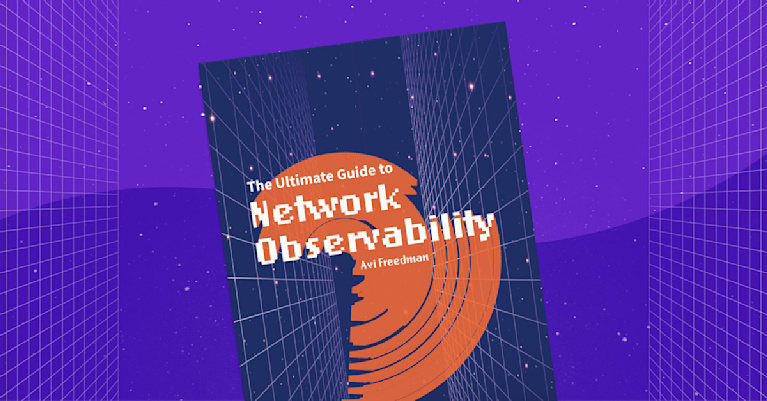What is Network Observability?
Network observability is the ability to answer any question about your network quickly and easily.
Put another way, network observability means the use of diverse data sources to understand what is happening inside a network, and how the internal state of the network impacts business objectives and user experience.
Why is Network Observability Important?
Understanding the internal state of networks has always been an important component of managing the overall performance and reliability of applications and infrastructure. Networks play a central role in connecting the various parts of a software stack, as well as delivering applications to users. As a result, you can’t manage the overall software environment and user experience effectively unless you can manage the performance of the network.
However, network observability has assumed even more importance in recent years due to the explosion in complexity of networking configurations and architectures. In the past, networks were relatively simple in nature. They were usually mapped to a specific location—such as a single data center—and their configurations did not change constantly.
In contrast, modern networks often span multiple data centers and/or clouds. Rather than being mapped to physical infrastructure, their configurations are defined in software and change continuously as containers spin up and down, orchestrators move workloads between nodes, endpoints change IP addresses and so on.
This means that, in a modern network, it has become especially difficult to understand the state of the network at any single point in time. In addition, the constantly changing nature of the network makes it hard to identify anomalies that could be associated with performance or availability issues. When network configurations and traffic patterns fluctuate rapidly as a part of normal operations, it becomes more difficult to understand which patterns or changes may indicate a problem, and which are simply a reflection of normal operations.
By providing continuous visibility into networks, as well as helping teams to align data about the state of the network with business contexts (such as availability and performance guarantees), network observability allows organizations to manage the complexity of modern networks and ensure that their networks support business requirements.
The Pillars of Network Observability
The specific data sources and processes that drive network observability will vary from one organization to another depending on the network architecture it uses and the types of workloads it runs. However, all network observability operations rely on three key pillars.

Telemetry: Telemetry is the data that allows teams to understand the internal state of the network based on external outputs. Network telemetry includes data sources such as flow logs, routing tables, application latency and performance testing data.
Data platform: A data platform ingests diverse telemetry data, then contextualizes and enriches it so that teams can use the data to ask and answer meaningful questions about the state of the network. For example, a data platform could map network performance data to users and applications, which makes it easier to understand how network performance trends impact specific users and apps.
Action: There is little value in collecting and analyzing network telemetry data if you can’t also take action based on the data. Thus, the final crucial step in network observability is deploying flexible workflows, automations and integrations that allow teams to remediate network performance problems, collaborate in responding to performance issues and so on.
Everything you ever wanted to know about network observability

Network Observability vs. DevOps Observability
Network observability complements, but is distinct from DevOps observability. DevOps observability is the approach that teams use to understand the state of applications running within distributed environments.
In recent years, there has been a flurry of interest in leveraging metrics, logs and distributed traces in order to transform traditional application performance monitoring into DevOps observability. Indeed, such an approach has become essential for performance management of complex, cloud-native applications, which are hosted in distributed environments and deployed using orchestration tools that abstract applications from the underlying infrastructure. This is what DevOps observability is all about.
DevOps observability is vital for tracking and optimizing performance at the application level. However, it doesn’t address the needs of network performance. DevOps observability tools and methodologies don’t fully factor in network-specific data and contexts such as network prefixes, paths, underlays and overlays. They also provide little ability to understand how complex network architectures, such as software-defined networks that span multiple clouds and/or private data centers, correlate with application performance and business objectives.
Network observability fills in these gaps by allowing teams to gain complete visibility into the state of the network and its impact on the business. In this way, network observability serves as a critical complement to DevOps observability.
Get the Benefits of Network Observability with Kentik
Kentik offers the network observability solution designed for today’s complex, multicloud network environments. The Kentik Network Observability Platform empowers network pros to monitor, run and troubleshoot all of their networks, from on-premises to the cloud. Kentik’s network observability solution addresses all three pillars of modern network monitoring, delivering visibility into network flow, powerful synthetic testing capabilities, and Kentik NMS, the next-generation network monitoring system.
To see how Kentik can bring the benefits of network observability to your organization, request a demo or sign up for a free trial today.

